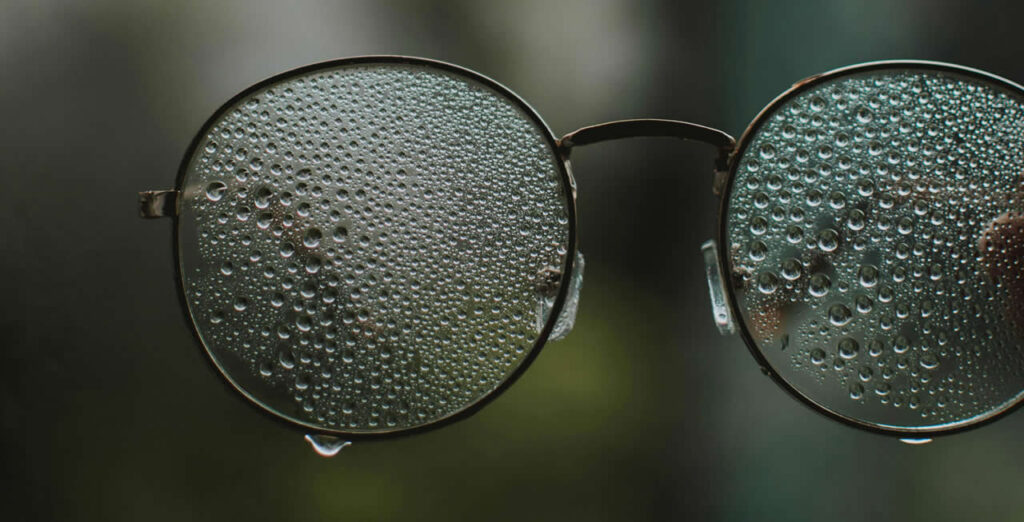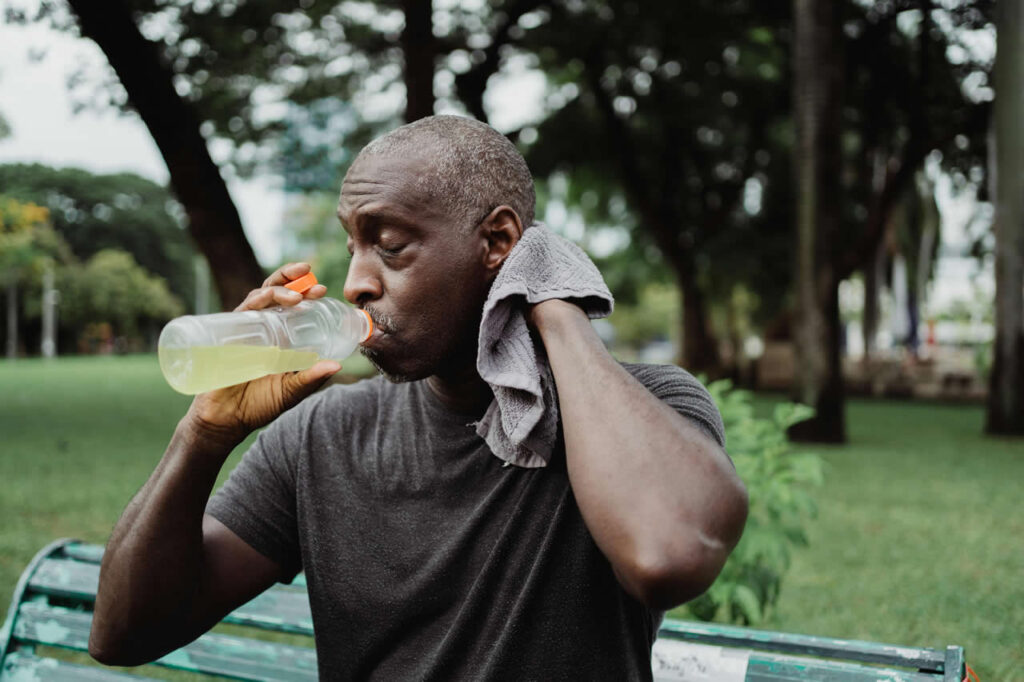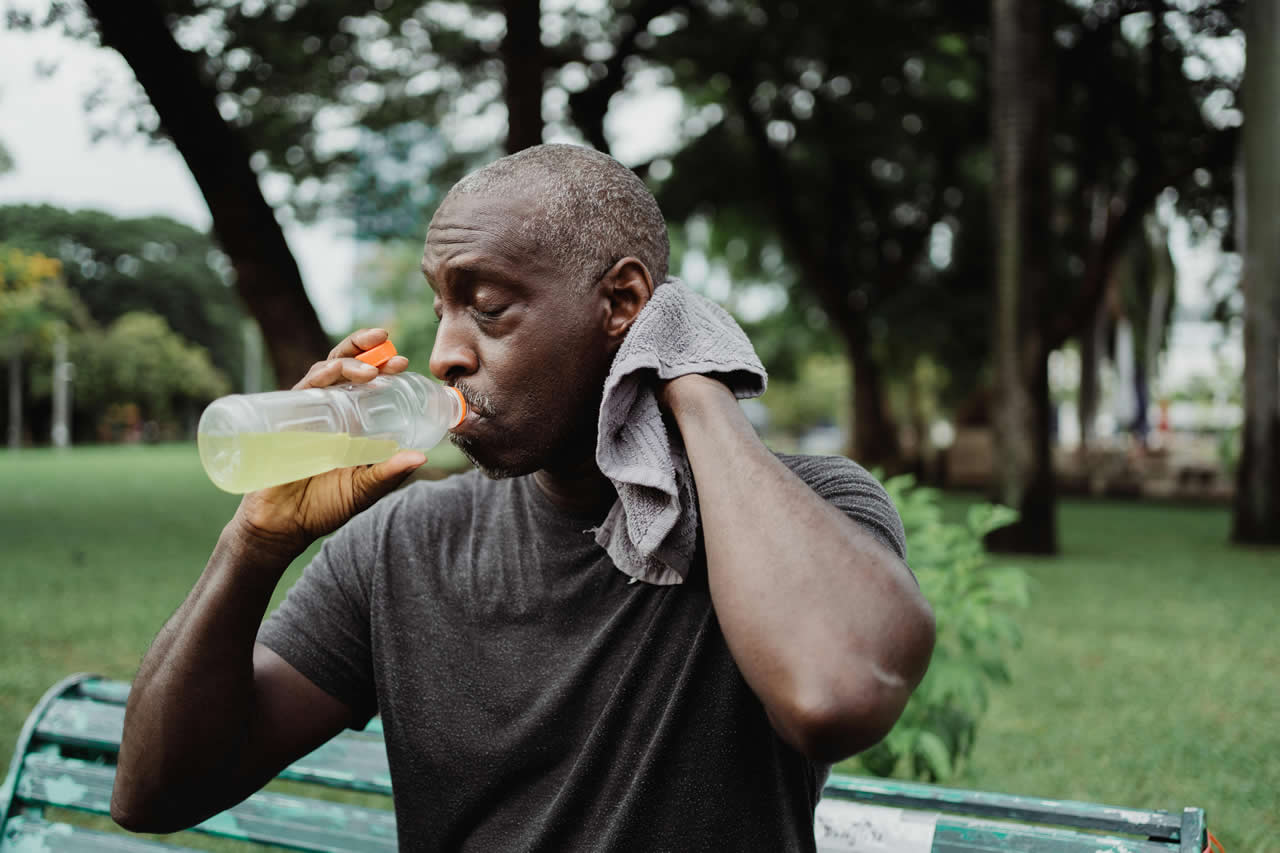The Land of Smiles is known for a lot of enjoyable things, but the heat and humidity in Thailand can be a challenge, especially if you come from a cooler climate and are not used to this kind of tropical heat. Finding a way to cope with Thailand’s weather is important. Here are practical tips to help you stay cool(er) and more comfortable in the tropics:
When I first landed in Thailand, the heat hit me like a hammer. Stepping out of the airport felt like walking into a sauna. My shirt was clinging to me within minutes, and my glasses fogging up instantly. Welcome to Thailand, right!?

Dealing with Humidity
Humidity is no joke in Thailand. It can leave you feeling sticky just minutes after stepping outside. High humidity affects your comfort level by making it harder for sweat to evaporate from your skin, depriving you of its natural cooling effect. Recognizing this can help you plan your days better, like opting for indoor activities or shady spots during peak humidity hours.
Adapting to the Heat
Living or staying in Thailand means getting acquainted with how your body responds to the heat. You might notice yourself sweating more, feeling a bit sluggish, or needing more water and rest than usual. It’s crucial to listen to these signals and adopt habits that promote your well-being, like taking ample breaks in cooler environments when necessary.
Know Thailand’s Climate
Thailand boasts a tropical climate, which means it’s hot and humid pretty much year-round. However, within this tropical framework, there’s some variation. From around November to February, you get cooler, dryer weather, which is often considered the best time to visit. March to May brings the real heat, while June to October is marked by the monsoon season. So, whether you’re planning a trip or you’re about to settle here, knowing these shifts can really help you pace and enjoy your activities.
Thailand has three main seasons:
- Hot Season (March to June) – Temperatures can exceed 40°C (104°F). It’s the most intense period for heat.
- Rainy Season (July to October) – Hot and humid, with frequent but brief downpours.
- Cool Season (November to February) – More comfortable but still warm.
Understanding these seasonal changes helps you prepare for Thailand’s weather and plan activities accordingly.
Stay Hydrated in Thailand’s Heat
Staying hydrated isn’t just about drinking water, though that’s crucial. Add a little variety by trying local beverages like coconut water or herbal teas, which are not only refreshing but also packed with electrolytes and nutrients. Snacking on juicy fruits like mangoes and watermelons helps keep you hydrated and are a delicious way to beat the heat.
Dehydration is a common issue due to the high temperatures. Drink water regularly, even if you don’t feel thirsty. Consider electrolyte drinks like Pocari Sweat or Thai brands like M-Sport to replenish minerals lost through sweat. Coconut water in Thailand is also widely available and is an excellent natural hydrator.
Dress Appropriately for Hot and Humid Weather
Choose lightweight, breathable fabrics like cotton or linen. Loose-fitting clothing let your skin breathe and help sweat evaporate, reducing that sticky feeling. Bright colors can reflect sunlight, which helps to keep you cooler, too. Accessories such as hats or using umbrellas for shade offer additional sun protection.
Keep Cool Indoors
Thailand offers plenty of indoor activities perfect for escaping the heat but still soaking up the culture. Visit air-conditioned museums, like the Bangkok National Museum, or explore indoor markets where the only thing hotter than the weather is a great bargain. Temples often provide a cooler respite, as well, especially those with shaded courtyards.
Air conditioning is useful but can increase energy bills. Balance its use with fans and natural ventilation. Keep curtains closed during peak sunlight hours to reduce indoor temperatures. Many locals place fans near windows to enhance airflow, reducing the need for constant air conditioning.

Beat the Heat Outdoors
If you’re itching for adventure, early morning or late afternoon excursions can help you avoid the peak sun. National parks and waterfalls are ideal for early starts, offering cooler temperatures and stunning views without the energy-draining heat. Don’t forget to pack a hat and plenty of water for these trips.
- Seek shade whenever possible – public spaces in Thailand often have shaded areas.
- Visit air-conditioned malls or cafes to cool off. Popular choices include Terminal 21 and Siam Paragon.
- Plan outdoor activities in the early morning or late evening when temperatures are milder.
These strategies help you stay cool in Thailand while exploring its vibrant cities and scenic landscapes.
Eat and Drink Smart
Thai cuisine includes many hydrating foods, such as fresh fruits like watermelon, mango, and papaya. Spicy Thai dishes may seem counterintuitive, but they trigger sweating, which helps your body cool down. Opt for light meals like Som Tum (papaya salad) to stay refreshed without feeling sluggish.
Protect Your Skin from Thailand’s Sun
The sun in Thailand can be harsh, so protecting your skin is vital. Sunscreen with high SPF is a must, regardless of your skin type, applied generously before you head out. Hats, sunglasses, and UV-protective umbrellas are also handy accessories to shield you from sun exposure. After-sun care like aloe vera can soothe your skin and keep it healthy.
Timing Your Beach Visits
Thailand’s beaches are legendary, and wisely timing your visits can make them more enjoyable. Early mornings and late afternoons are perfect for sun-safe relaxation. Snorkeling or diving also offer some relief from the heat while letting you explore the underwater wonders away from direct sunlight.
Recognize Signs of Heat Exhaustion
Heat exhaustion and heatstroke are real risks in Thailand’s hot climate. Watch for symptoms like:
- Dizziness or light-headedness
- Fatigue or weakness
- Nausea or vomiting
If these symptoms occur, find shade, hydrate, and rest. If they persist, seek medical attention. Thailand has excellent healthcare facilities, so don’t hesitate to visit a clinic if needed.
Adjust Your Daily Routine
Adapting to the heat involves modifying daily habits, such as:
- Avoiding strenuous activities during the hottest parts of the day (11 a.m. to 3 p.m.).
- Taking regular breaks in shaded or air-conditioned areas.
- Embracing a slower pace, especially in the afternoons.
This approach not only helps you stay comfortable but also allows you to enjoy Thailand’s lifestyle without feeling exhausted.
Enjoying Local Sports and Outdoor Activities Safely
Local sports and outdoor activities can be tempting during your stay. It’s key to keep sun exposure and hydration in mind. When playing golf or going for a bike ride, mid-afternoon might be too taxing, so opting for morning or dusk outings can keep it enjoyable without risking heat exhaustion. Keeping shade and water on standby will help you balance thrill with safety.
Learn from Locals
Traditional Thai techniques can provide relief from the heat as well. Splashing water on your wrists, feet, or temples can rapidly cool you down. Thai herbal compresses or massages not only relax you but can also help improve circulation and remove heat from the body. Munching on spicy foods may sound counterintuitive, but they can actually stimulate perspiration, helping you cool down naturally.
Thai people are experts at dealing with the heat. They often:
- Use umbrellas for shade and carry cool towels.
- Drink iced beverages throughout the day.
- Move at a relaxed pace during the hottest hours.
Observing and adopting these local habits can greatly improve your comfort and help you adapt to living in Thailand’s climate.
Final Thoughts on Coping with Thailand’s Heat
Coping with the heat and humidity in Thailand is about preparation and adaptation. With the right clothing, hydration habits, and daily routines, you can thrive in this tropical climate.
Give Yourself Time to Acclimatize. If you’re new to Thailand, give yourself time to acclimatize. Your body will need a few days or even weeks to adjust to the tropics. During this time, gradually increase your exposure to the sun and heat, wear lightweight clothing, and steadily up your hydration game. It not only makes the transition easier but also sets a solid foundation for enjoying what Thailand has to offer without discomfort.
After all these years in Thailand I have to admit I never fully adjusted to the local climate. Instead, I developed a narrow band of temperature in which I feel comfortable. When temperature drops below 24°C I feel already cool and think about putting on a jumper. But when it’s getting hotter above 34°C I sweat profusely and seek air-conditioning.
By embracing local customs and being mindful of the weather, you’ll find that the challenges of the heat are well worth the incredible experiences Thailand offers.
Share Your Tips!
How do you handle the heat in Thailand? Share your thoughts in the comments below! Your insights could help other expats and travelers enjoy Thailand comfortably.

